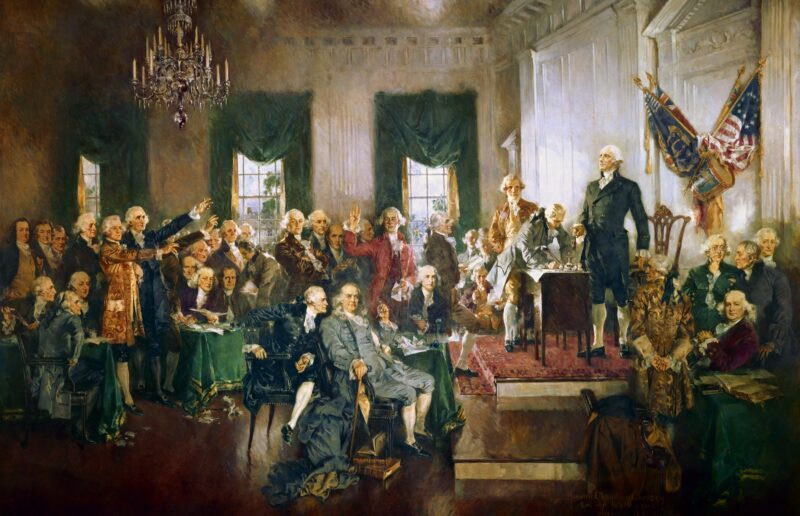Federalism
In Summary
“The Union is older than any of the States, and, in fact, it created them as States. Originally some dependent colonies made the Union, and in turn the Union threw off their old dependence for them and made them States, such as they are. Not one of them ever had a State constitution independent of the Union. Of course it is not forgotten that all the new States framed their constitutions before they entered the Union, nevertheless dependent upon and preparatory to coming into the Union.”
Abraham Lincoln
Special Session Message
The U.S. Constitution delegates specific powers to the national government and leaves all unenumerated powers to the states, establishing a federal system. Despite the framers’ efforts to define the powers of the national and state governments, the relationship between them has not always been clearly understood. The sources below offer insight into how federalism in the U.S. was created and how it has developed over time.
JMC Resources

The Founding Era
Defining the relationship between the state governments and central government proved to be a difficult task for the framers at the Convention. Some delegates feared a strong central government would quickly devolve into despotism while others believed a weak central government would make the United States appear weak to foreign powers. The sources below include arguments for why a federal form of government is necessary, how the Constitution establishes a federal government, and actions taken by state legislatures to ensure their sovereignty is not infringed on by the central government.
Conventions
Constitutional Convention, excerpts
Hamilton and Wilson in the Ratifying Conventions
Federalist Papers
Virginia & Kentucky Resolutions

After the Founding
McCulloch v. Maryland (1819) is a landmark Supreme Court case that takes up the issue of the national bank and a state’s ability to tax a federal bank. Chief Justice Marshall’s opinion explores the principle of federalism in determining Maryland’s ability to tax a federally chartered and funded bank.
In this letter, James Madison responds to a question about the Virginia Resolution of 1798 (which he helped author). Madison justifies the resolution by explaining the federal system that the U.S. operates under in great detail.
James Madison letter to Nicholas P. Trist, 1830
John C. Calhoun, an advocate of state sovereignty and proponent of states’ rights, wrote two complementary books about government that were published after his death. The excerpts here explain the U.S. system of federalism and emphasize the republican nature of the government in contrast to monarchical or aristocratic governments.
This address summarizes the events that took place leading up to the Civil War. Lincoln justifies the actions taken by the Union against the Confederacy by claiming the Southern states had no Constitutional right to secede. His explanation relies heavily on the concept of federalism and the obligations of states to one another and to the Union as defined in the Constitution.
Other Resources
The Battle Over Reconstruction
NEH EDSITEment!
Abraham Lincoln on the American Union: “A Word Fitly Spoken”
NEH EDSITEment!